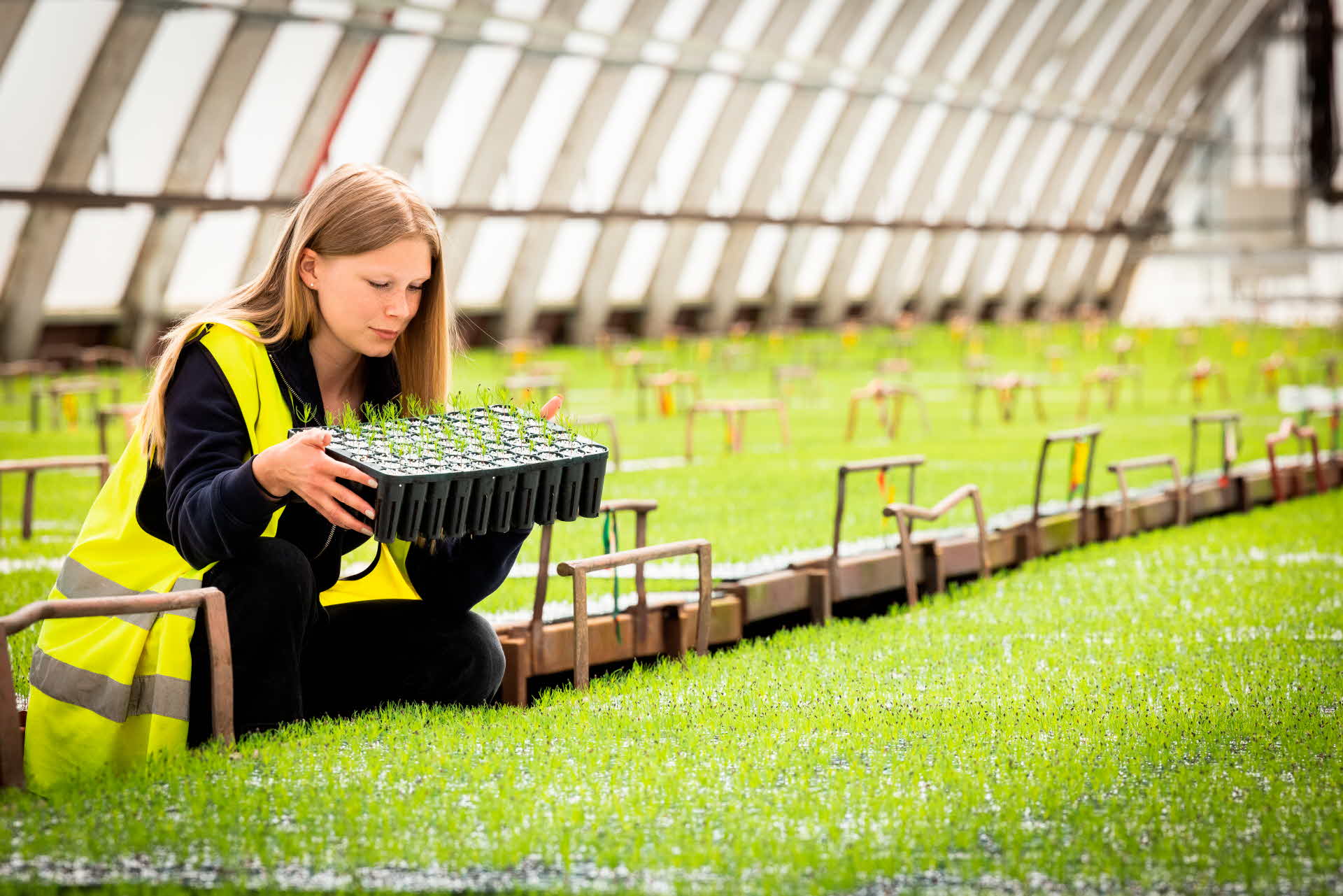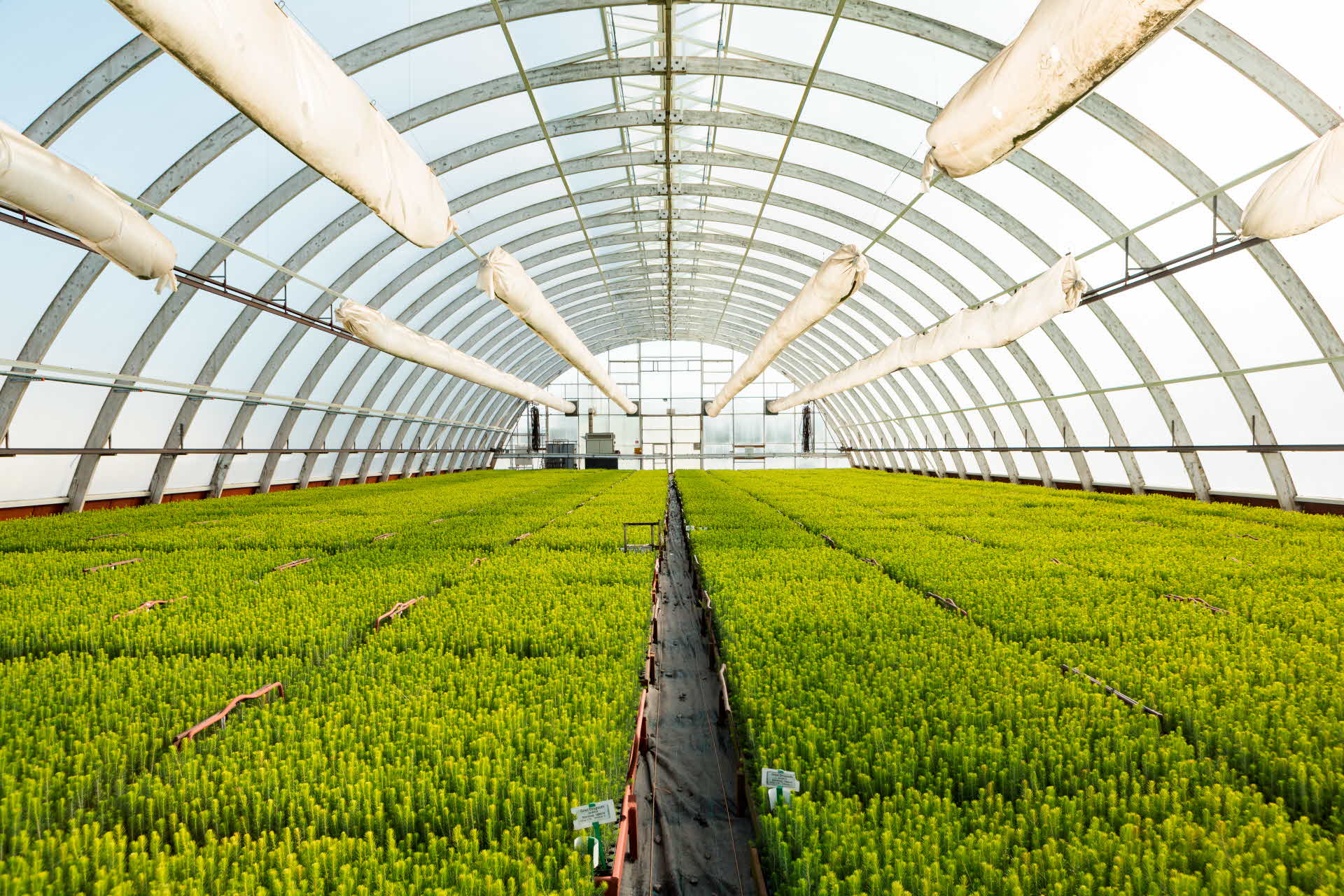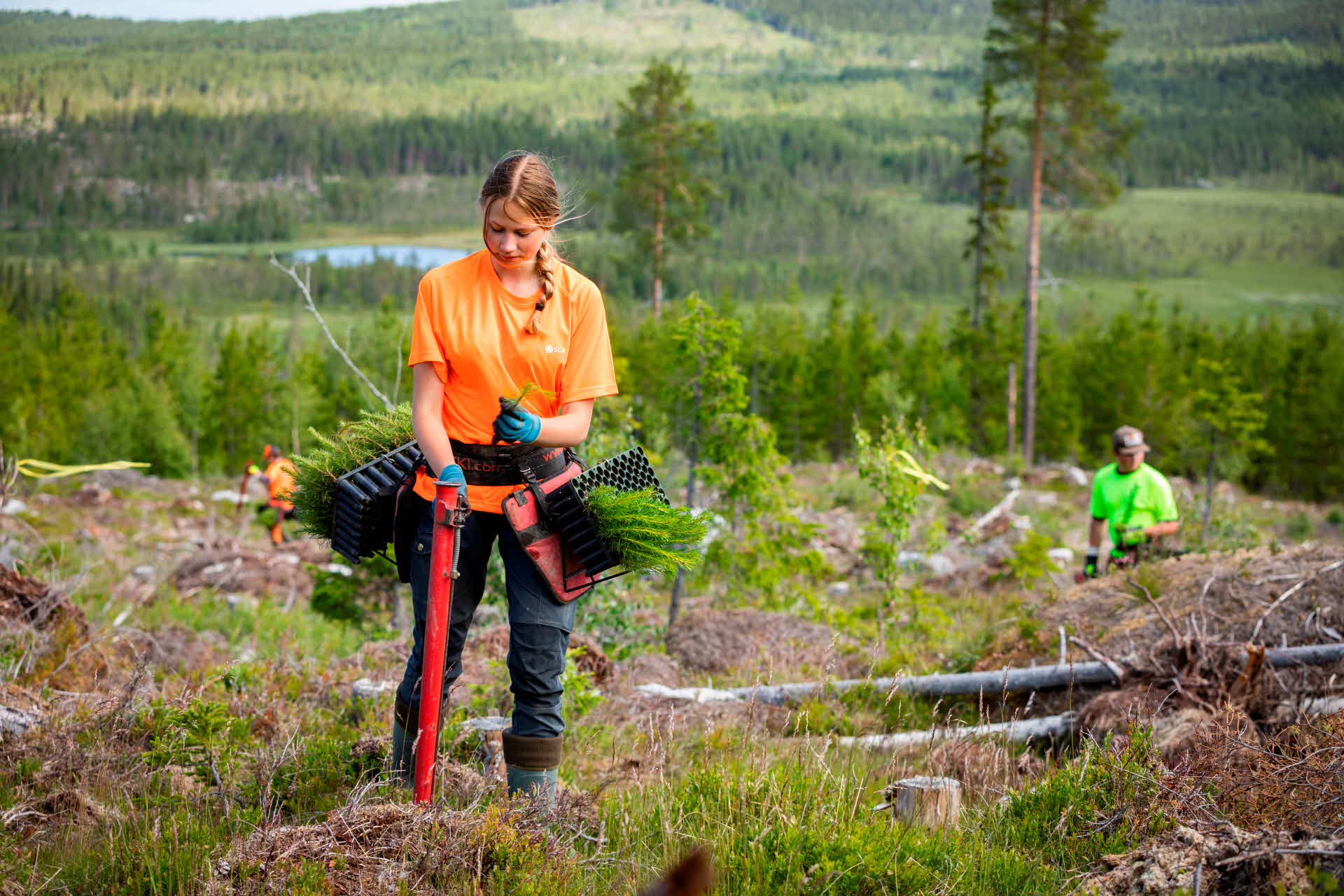
Come inside SCA's nurseries, here we create 100 million carbon absorbing trees every year
- News
- Forest
At SCA’s nurseries, you can almost hear the seedlings growing. Every year, approximately 100 million seedlings see the light of day here at SCA’s own forest nursery. Seedlings that eventually grow into adult trees, absorb carbon dioxide and form the forests of the future.
“We grow the forests of the future and really good carbon dioxide traps,” says Thomas Vestman, Nurseries Director.
In the 18 large greenhouses at SCA’s nurseries, delicate, green little seedlings are sprouting. Here they are carefully monitored and have a safe and good start in life. Seedlings that have had time to get a little bigger and stronger are out in the open ground. Even if they are growing outdoors, they still receive meticulous care, with just the right amount of nutrition and water.
One in four Swedish seedlings
After growing for a few more months, the seedlings are ready to be planted, to become the start of the next generation of forest.
“Every year, we deliver more than 100 million forest seedlings, approximately 40 per cent for planting on our own land and the rest to other forest owners,” says Thomas.
SCA’s seedling production is enough for roughly 50,000 hectares a year, or an area the size of 100,000 football pitches.
“The fact is that every fourth seedling planted in Sweden comes from us,” notes Thomas.

Efficient carbon sinks
Planting after felling is the most efficient way to grow new forest. And never has this been more important than now. Growing forests are a central part of the solution to the greatest challenge of our time: climate change. When trees grow, they absorb carbon dioxide, the greenhouse gas that most influences the Earth’s climate. For every cubic metre of stemwood trees grow, they absorb 1.3 tonnes of carbon dioxide from the atmosphere.
“The trees are thus very efficient carbon collectors and provide this benefit for a very long time. Depending on the tree species and where trees grow, it takes between 60 and 120 years from one forest generation to the next. And once trees are felled, they continue to benefit the climate. They become sustainable products that can replace fossil alternatives such as plastic and concrete, so that fossil coal can remain in the ground,” explains Thomas.
At the same time, new trees are constantly being planted that grow quickly and absorb more carbon dioxide.
“SCA plants at least two new trees for every tree that is felled. We manage our forests so that the absorption of carbon dioxide constantly increases, because growth is constantly greater than felling,” says Thomas.

Turbo-charged plants
SCA seedlings are refined with classic plant husbandry. Quite simply, we have selected the very best trees and cross-bred them with each other for several generations.
“In this way, we’ve produced plants that grow quickly and are disease-resistant. They produce forests that grow 25 per cent better than unmanaged forests. This means that they absorb carbon dioxide faster and that we get faster access to more sustainable raw materials,” says Thomas.
The growth capacity of these plants is fascinating. At their fastest, they grow about one centimetre a day.
“You can see that they’ve grown from one day to the next. Photosynthesis works overtime here and it’s quite something to walk around the nurseries and see the incredible power of life,” says Thomas.
Fossil-free heating
The heating of SCA’s nursery operations is completely fossil-free. The Bogrundet nursery is heated with pellets from SCA’s own sawmill, while the Wifstamon nursery uses district heating from SCA’s pulp mill in Östrand.
“We’re really using SCA’s circularity to grow the forest of the future,” concludes Thomas.
Photo: Michael Engman